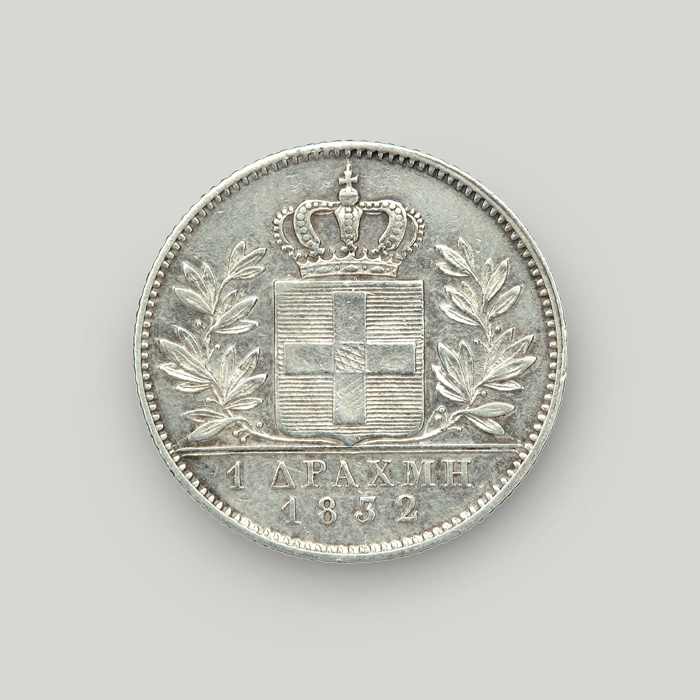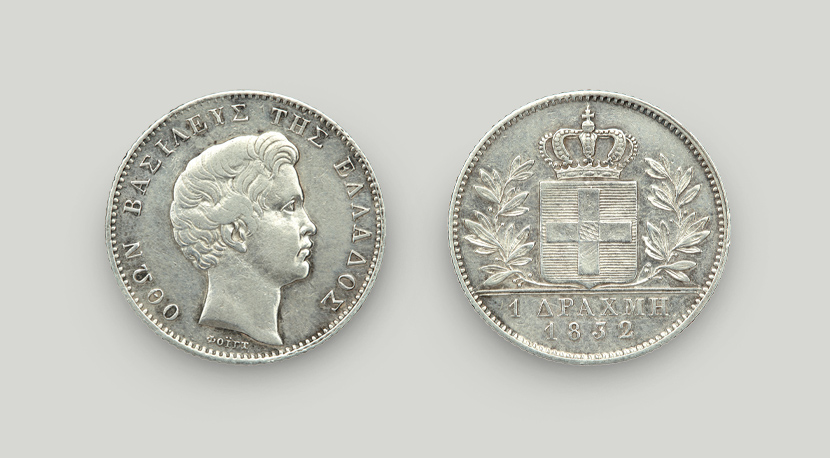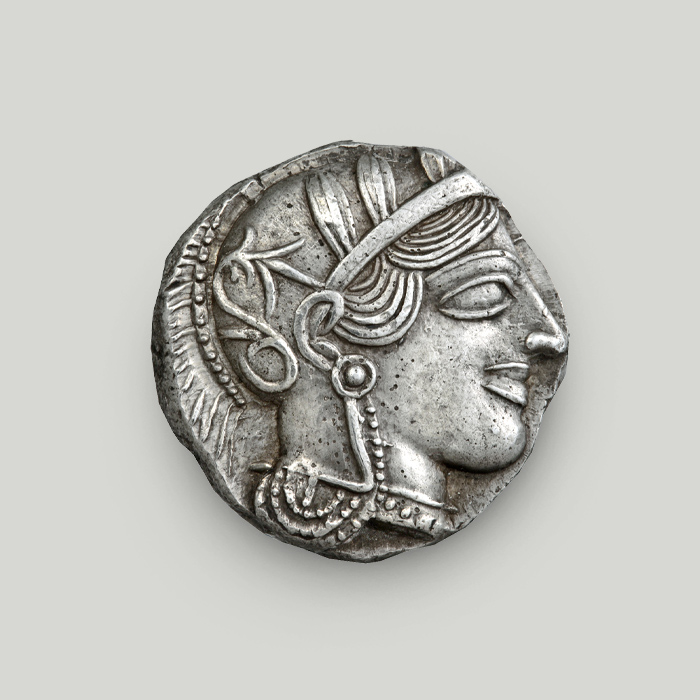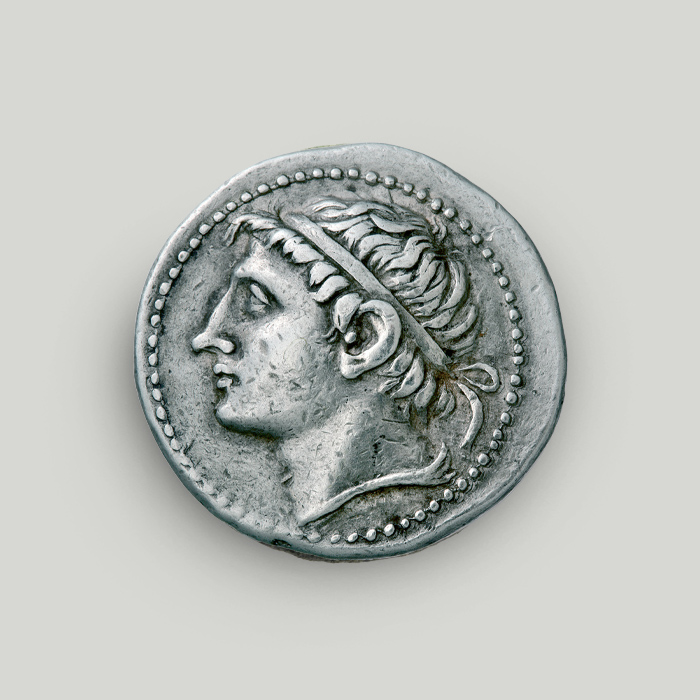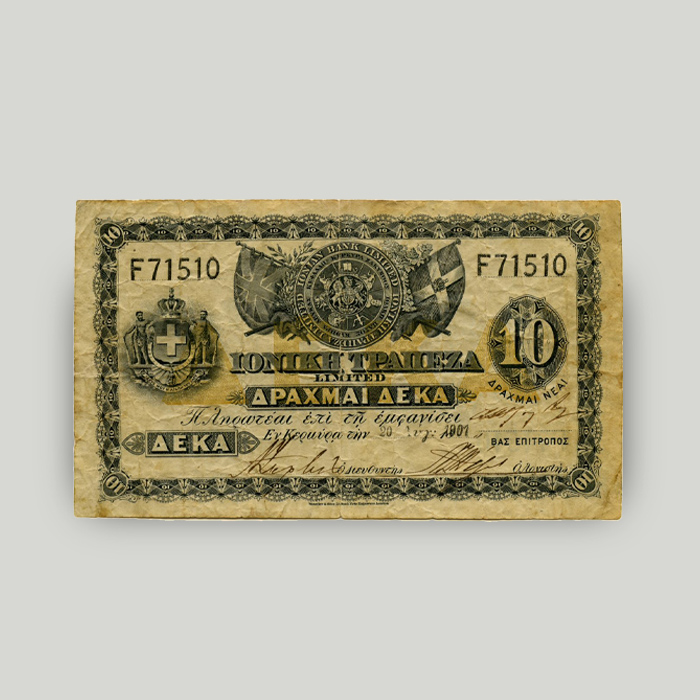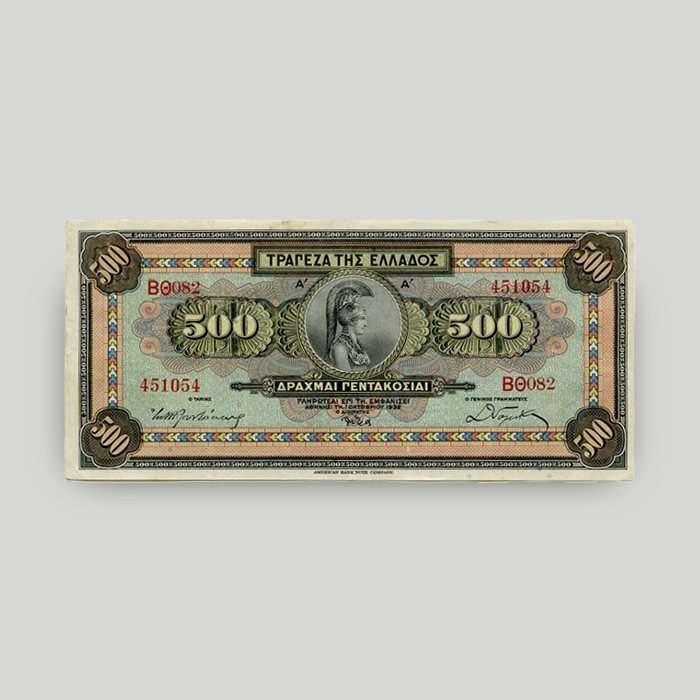Silver drachma of King Otto
King Otto’s silver drachma is the first drachma of the newly-established Greek state. It replaced the phoenix of Kapodistrias by royal decree of Otto, first king of Greece. Otto’s Bavarian family and regency council felt strongly about Greek antiquity, which led to the decision that the new Greek currency should be named after the Ancient Greek one.
Obverse
Head of young King Otto in right profile within a circular dotted border. The inscription within and along the border reads ΟΘΩΝ ΒΑΣΙΛΕΥΣ ΤΗΣ ΕΛΛΑΔΟΣ (Otto, King of Greece). Under the king’s head, there is the engraver’s name transliterated into Greek (ΦΟΪΓΤ for “Voigt”).
Reverse
The royal coat of arms within a circular dotted border. Underneath, the inscription 1 ΔΡΑΧΜΗ 1832 (1 Drachma 1832).
Otto, the first king of the newly-established Greek state
Prince Otto Friedrich Ludwig of Bavaria (1815-1867) became the first king of the newly-established Greek state. Following the Greek War of Independence, the Great Powers of the time (France, England, Russia) agreed on the new country’s political regime. The Bavarian prince, who was only 17 at the time, was made king.
In 1833 young King Otto arrived in Nafplion, the temporary capital of the newly-established state. There, he was crowned “King of Greece by God’s Mercy”. As he was not yet of age, a regency council consisting of 3 Bavarian court officials reigned in his place.
The drachma as the new national currency
By royal decree of 1833, Otto replaced the phoenix of Kapodistrias with the drachma as the new national currency
The decision to name the new national currency after the Ancient Greek coin was spurred by the Bavarians’ love of Greek antiquity.
The new capital and organisation of the state
In December of 1834 Athens was made the new capital of Greece. Bavarian architects were commissioned to build some of the city’s now most iconic buildings. At the same time, an effort was made to organise the state’s administration and finances.
Educational initiatives included establishing schools of all levels, as well as the University of Athens or Othonian (now Kapodistrian) University.
By royal decree, 25 March was established as the Independence Day to commemorate the liberation of Greece from Ottoman rule.
Dissatisfaction with the king
Otto’s increasing absolutism negatively affected his standing among the people. His reign as absolute monarch gradually led to deep popular dissatisfaction, which escalated into the armed but bloodless uprising of 3 September 1843.
Under the circumstances, Otto was forced to grant a Constitution. This marked the transition from absolute to constitutional monarchy in Greece.
In October 1862 Otto was deposed and forced to leave for Bamberg, Germany with his wife, Queen Amalia. In 1867 Otto fell ill and died aged 52.
Minting under King Otto
King Otto coins were produced by 3 mints:
- Munich (1833-1834), with no mint mark.
- Paris (1833-1834), with the mint mark A.
- Athens (1836-1841), only for copper coins.
During Otto’s reign, series of gold 40- and 20-drachma coins, silver 5-, 1-, 1/2- and 1/4-drachma coins as well as 10-, 5-, 2- and 1-lepton coins were minted.
Depictions of monarchy on coins
Coin type depictions are consistent with the institution of monarchy.
Gold and silver coins had the head of Otto with the inscription Βασιλεύς της Ελλάδος (King of Greece) on the obverse. Underneath, there was the name of Carl Friedrich Voigt, the official engraver of the king’s portrait.
The Alpha Bank Numismatic Collection is not open to the public.
Research visits to the Numismatic Collection can be organised upon request.
Contact us to book your visit.

